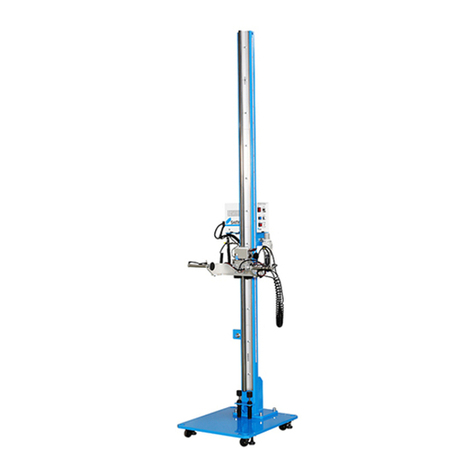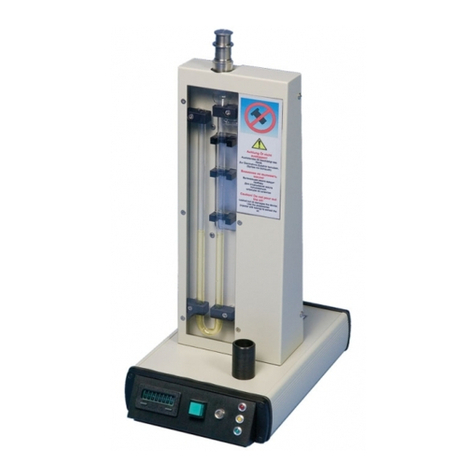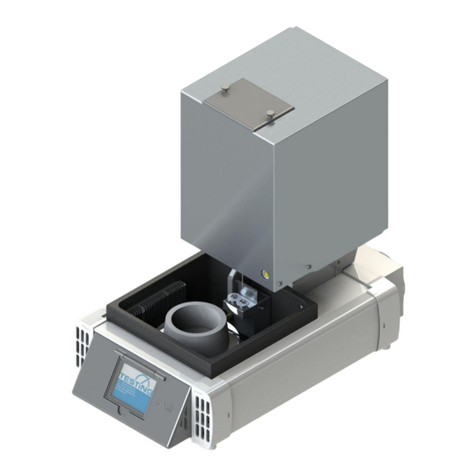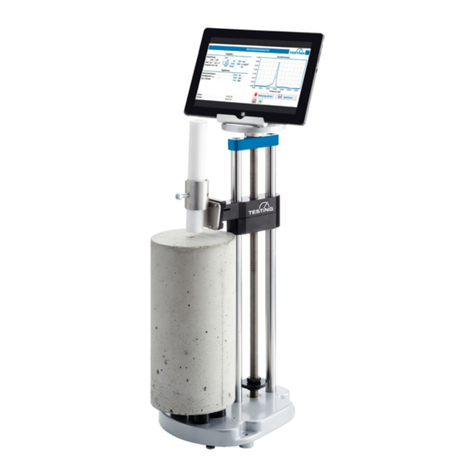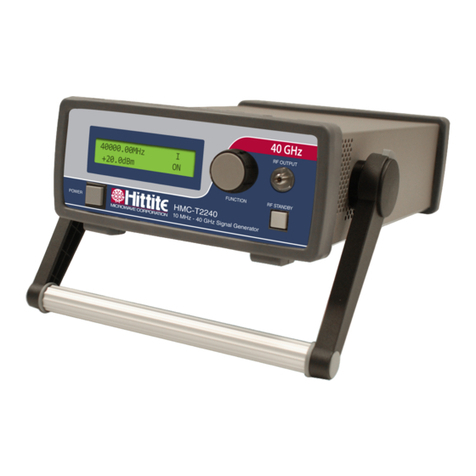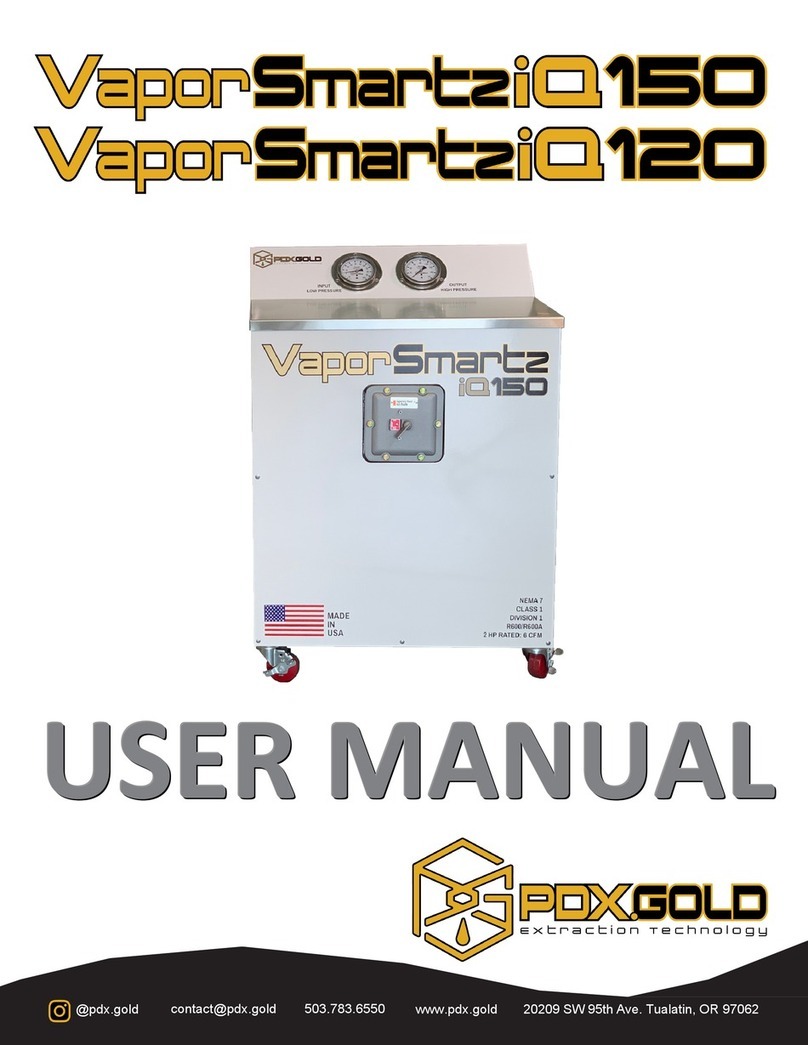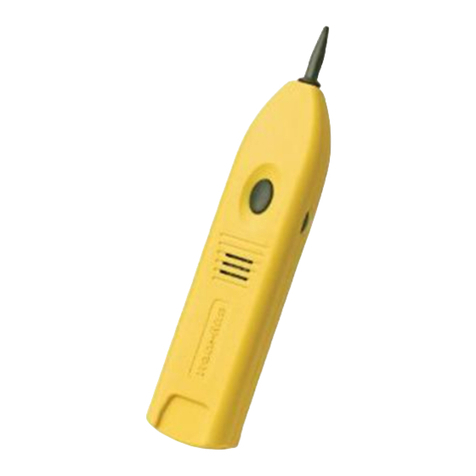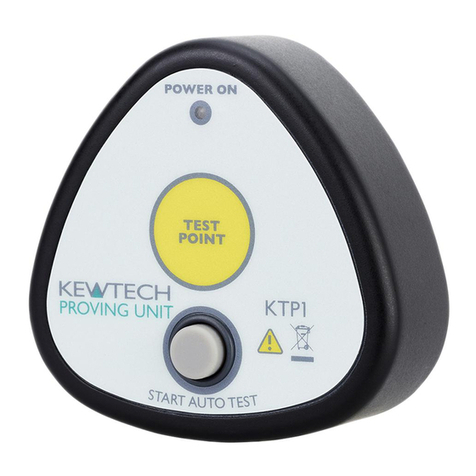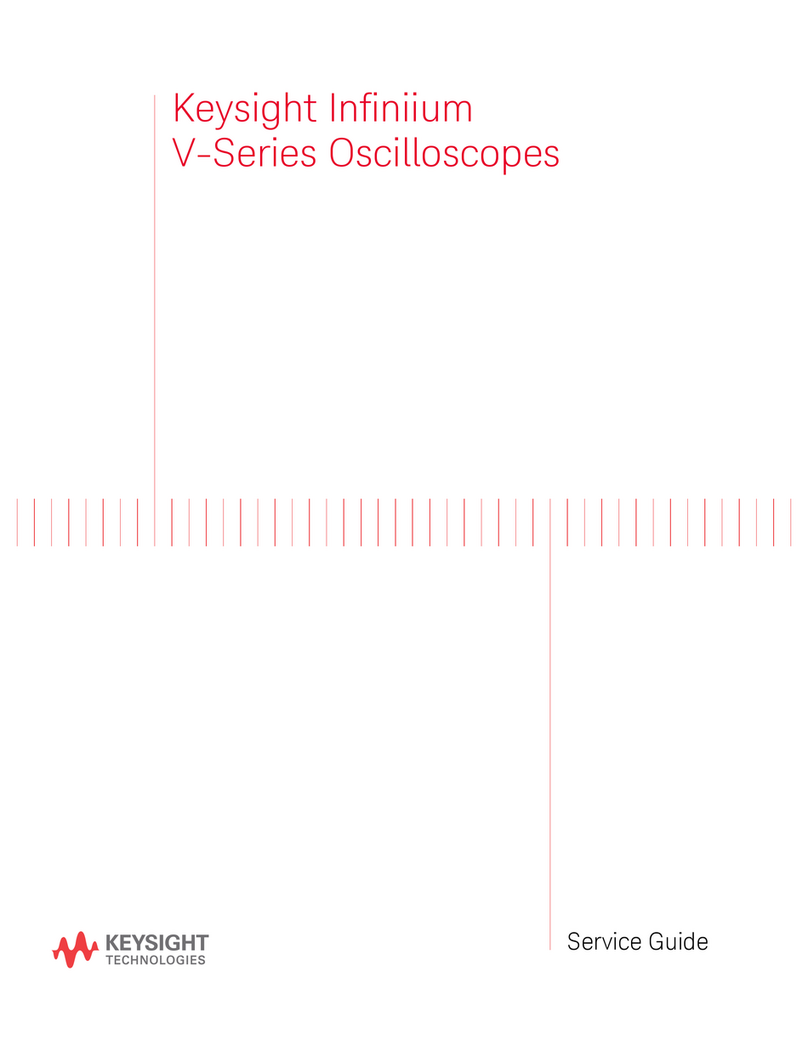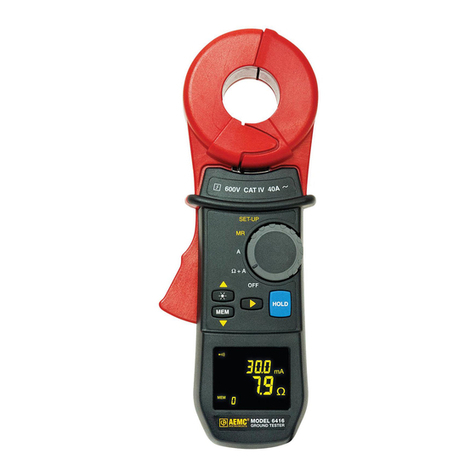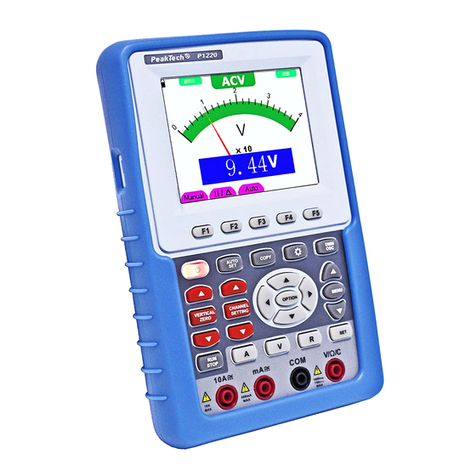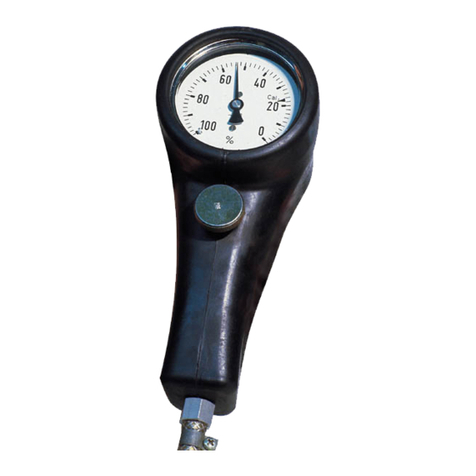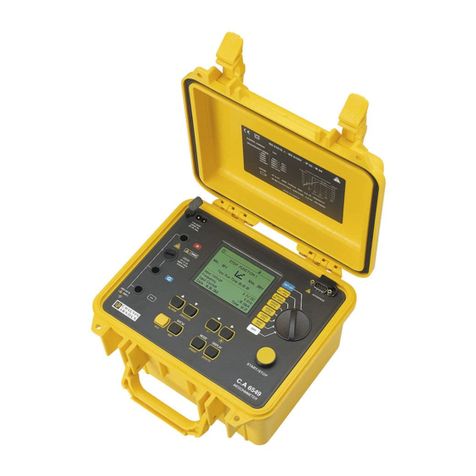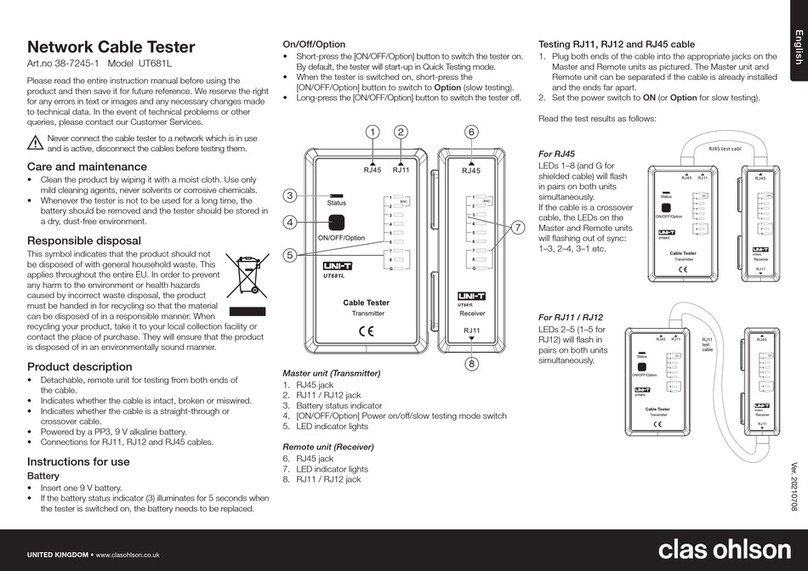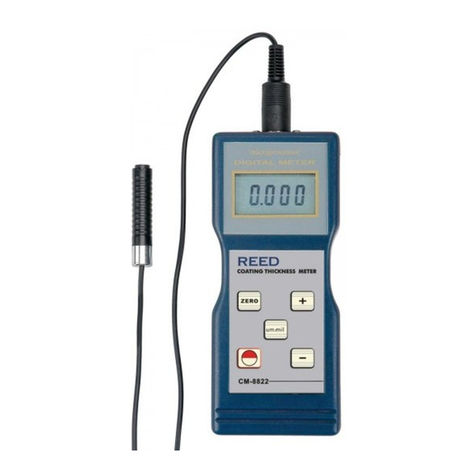TESTING 1.0366 User manual

TESTING Bluhm & Feuerherdt GmbH
Manufacture and Distribution of
Testing Equipment for Construction Materials
Motzener Str. 26b
DE-12277 Berlin
Tel. +49(0)30/710 96 45-0
Fax +49(0)30/710 96 45-98
www.testing.de
1
Operating Manual
Multi Station Vicat Needle Testing Apparatus
Model
Material
Standard
PC-controlled
model with places
Cement
Gypsum
EN
ASTM
1.0366
X
X
6
1.0366.ASTM
X
X
1.0366.EN_ASTM
X
X
X
1.0366.G
X
X
1.0366.GZ
X
X
X
1.0367
X
X
8
1.0367.ASTM
X
X
1.0367.EN_ASTM
X
X
X
1.0367.G
X
X
1.0367.GZ
X
X
X
1.0368
X
X
12
1.0368.ASTM
X
X
1.0368.EN_ASTM
X
X
X
1.0368.G
X
X
1.0368.GZ
X
X
X

Multi Station
Vicat Test Apparatus
2
CAUTION: Do not place this device into operation until you have made yourself fully acquainted with its
connection, with its function, and with the position of all its control elements and functions.
Content Page
1Basic instructions...................................................................................................................5
1.1 Designation................................................................................................................................................................5
1.2 Purpose for which this system was designed.............................................................................................................5
1.3 Improper use and safety notices ................................................................................................................................5
1.4 Guarantee..................................................................................................................................................................7
1.5 Acceptance of delivery and transport .........................................................................................................................7
1.5.1 Acceptance of delivery...............................................................................................................................................7
1.5.2 Transport ...................................................................................................................................................................7
1.5.3 Commissioning..........................................................................................................................................................7
1.6 Scope of delivery .......................................................................................................................................................8
1.7 Connection to the power supply.................................................................................................................................9
2Apparatus properties............................................................................................................10
3Operation...............................................................................................................................11
3.1 Commissioning........................................................................................................................................................11
3.1.1 Connections and switching on..................................................................................................................................11
3.1.2 Filling.......................................................................................................................................................................14
3.1.3 Temperature control.................................................................................................................................................15
3.1.4 Messages and warnings on the display....................................................................................................................17
3.2 Equipment................................................................................................................................................................19
3.2.1 Drope roads.............................................................................................................................................................19
3.2.2 Additional Weight of 700 grams................................................................................................................................20
3.2.3 Additional heat exchanger / art.no.1.0366.13...........................................................................................................21
3.2.4 Consistency plunger.................................................................................................................................................22
4Operation...............................................................................................................................24
4.1 Software ..................................................................................................................................................................24
4.2 Inserting samples.....................................................................................................................................................26
4.3 Starting the tests......................................................................................................................................................26
4.4 Safety during testing ................................................................................................................................................27
4.5 Monitoring................................................................................................................................................................28
4.6 Running to maintenance position.............................................................................................................................28
5Variants of Vicat needle devices.........................................................................................30
5.1 Position of the washing device depends on the variant ............................................................................................30
5.1.1 Selecting washer......................................................................................................................................................32
5.1.2 Enable/Disable usage of dryer .................................................................................................................................32
5.2 Setting the coordinates of the washer, the dryer, the samples and determination of the zero levels.........................33
5.2.1 Setting the coordinates of washing unit....................................................................................................................34
5.2.2 Setting the coordinates of the dryer..........................................................................................................................35
5.2.3 Setting the XY coordinates for the centre of the sample...........................................................................................36
5.2.4 Determining the zero levels of the samples..............................................................................................................37
5.2.5 Setting the penetration time for needle and cone .....................................................................................................39
5.3 Setting the rubber buffer ..........................................................................................................................................40
5.4 Changing the needle................................................................................................................................................41
5.5 Cleaning the filter.....................................................................................................................................................42
5.6 Changing the brushes..............................................................................................................................................44
5.6.1 Cleaning system for needles....................................................................................................................................44
5.6.2 Version for gypsum..................................................................................................................................................45
5.6.3 Cleaning or Changing the brush (washing unit for cone) ..........................................................................................46
5.6.4 Cleaning the filter tank (washing unit for cone).........................................................................................................47
5.6.5 Cleaning the water basin..........................................................................................................................................49
6Gypsum / Cement: Change of variants...............................................................................50
6.1 ASTM-Devices.........................................................................................................................................................51
6.1.1 ASTM-Device “1.0366.ASTM “.................................................................................................................................51
6.2 ASTM device “1.0367.ASTM”...................................................................................................................................52
6.3 ASTM device “1.0368.ASTM”...................................................................................................................................53
6.4 1.0366.EN/ASTM changeable types.........................................................................................................................54
6.4.1 EN (water level 55mm without samples)...................................................................................................................54
6.4.2 ASTM (water level min. 10mm)................................................................................................................................55
7Status and error messages on the handheld unit.............................................................56
7.1 The keys of the handheld unit ..................................................................................................................................59
8After-sales service................................................................................................................60
8.1 Date of this version of the Operating Manual............................................................................................................60
8.2 Copyright .................................................................................................................................................................60
8.3 Spare parts and technical help.................................................................................................................................60

Multi Station
Vicat Test Apparatus
3
Figures Page
Figure 1: Fuses...............................................................................................................................................9
Figure 2: penetration patterns ......................................................................................................................10
Figure 3: Switches and power supply...........................................................................................................11
Figure 4: Communication connectors...........................................................................................................11
Figure 5: Determining the reference points..................................................................................................13
Figure 6: Reference points set .....................................................................................................................13
Figure 7: VicatMPM apparatus is ready.......................................................................................................13
Figure 8: ball valves......................................................................................................................................14
Figure 9: flow guide and venting valve.........................................................................................................14
Figure 10: regulation of temperature............................................................................................................18
Figure 11: drop rods .....................................................................................................................................19
Figure 12: immersion cone...........................................................................................................................20
Figure 13: additional weight..........................................................................................................................20
Figure 14: additional heat exchanger...........................................................................................................21
Figure 15: open housing...............................................................................................................................21
Figure 16: pull off hose.................................................................................................................................21
Figure 17: connecting additional heat exchanger ........................................................................................22
Figure 18: consistency plunger ....................................................................................................................22
Figure 19: VicatMPM application software...................................................................................................24
Figure 20: fixing a sample in the testing station...........................................................................................26
Figure 21: washing unit for needle ...............................................................................................................26
Figure 22: emergency stop during running to position.................................................................................27
Figure 23: safety strips and flap ...................................................................................................................27
Figure 24: fix broken needle.........................................................................................................................28
Figure 25: maintenance position ..................................................................................................................28
Figure 26: running to maintenance position.................................................................................................29
Figure 27: drop rod is in maintenance position ............................................................................................29
Figure 28: positions of the washing unit at 6-stations machine....................................................................30
Figure 29: positions of the washing unit at 8-stations machine....................................................................31
Figure 30: positions of the washing unit at 12-stations machine..................................................................31
Figure 31: all tests disabled..........................................................................................................................32
Figure 32: selection window to activate the build-in washer unit .................................................................32
Figure 34: selection window set coordinates of washing unit? ....................................................................34
Figure 35: setting the coordinates of washing unit at position 1 ..................................................................34
Figure 36: selection window set coordinates of dryer? ................................................................................35
Figure 37: set coordinates of the dryer at position 1....................................................................................35
Figure 38: selection window, set XY coordinates for sample 1?..................................................................36
Figure 39: window for setting coordinates of sample 1................................................................................36
Figure 40: zero levels ...................................................................................................................................37
Figure 41: window for determining the zero levels of the samples ..............................................................38
Figure 42: progress of the zero level measurement.....................................................................................38
Figure 43: sample selection to change penetration time..............................................................................39
Figure 44: change the penetration time of a sample....................................................................................39
Figure 45: setting the rubber buffer..............................................................................................................40
Figure 46: changing the needle....................................................................................................................41
Figure 47: cleaning the filter.........................................................................................................................42
Figure 48: air venting....................................................................................................................................43
Figure 49: displaying flow rate......................................................................................................................43
Figure 50: brushes change in needle washing unit......................................................................................44
Figure 51: device version for gypsum ..........................................................................................................45
Figure 52: brush change in washing unit for cone .......................................................................................46
Figure 53: filter tank for gypsum version ......................................................................................................47
Figure 54: menu venting the washer for cone..............................................................................................48
Figure 55: venting the water cicle system....................................................................................................48
Figure 56: cleaning the water basin .............................................................................................................49
Figure 57: apparatus with 4, 6 or 8 stations for Gypsum and cement .........................................................50
Figure 58: apparatus with 12 stations for Gypsum and Cement..................................................................50
Figure 59: ASTM device “1.0366.ASTM” .....................................................................................................51
Figure 60: ASTM device “1.0367.ASTM” .....................................................................................................52

Multi Station
Vicat Test Apparatus
4
Figure 61: ASTM device “1.0368.ASTM” .....................................................................................................53
Figure 62: EN version...................................................................................................................................54
Figure 63: ASTM version..............................................................................................................................55
Figure 64: display connection status message ............................................................................................56
Figure 65: limit switch error message...........................................................................................................56
Figure 66: recursions error message ...........................................................................................................56
Figure 67: message broken needle..............................................................................................................56
Figure 68: message drop rod missing..........................................................................................................57
Figure 69: message searching for drop rod .................................................................................................57
Figure 70: message drop rod present ..........................................................................................................57
Figure 71: message rod lost during movement............................................................................................57
Figure 72: message time out of a motor.......................................................................................................58
Figure 73: view of a measurement window..................................................................................................58
Figure 74: handset unit.................................................................................................................................59
note
The descriptions and explanations are exemplary for all models.

Multi Station
Vicat Test Apparatus
5
1 Basic instructions
1.1 Designation
Designation of the device: Please see the nameplate on the Vicat Apparatus, which shows the
complete characteristic data and the electric properties of the sys-
tem.
1.2 Purpose for which this system was designed
This Operating Manual contains the information required for operation of the products described here, for
the purpose for which they have been designed. This Operating Manual is intended to be used by technically
qualified staff only.
“Technically qualified staff” is defined as those persons who – as a result of their training; their experience;
the instructions which they have received; as well as their knowledge of the relevant standards, regulations,
accident-prevention regulations, and conditions of product operation in the company –have been authorized
by the person responsible for the safety of the company equipment to carry out the activities and actions
required for operation of the equipment described below, and who can recognize and prevent any possible
dangers arising from such operation (this definition of technically qualified staff has been provided in IEC
364).
The User must observe the requirements and limit values, as well as all safety instructions, given in this
Operating Manual. Any use of this device not in accordance with these stipulations shall be considered to
be in violation of the use for which this system was intended. If this device must be operated under special
conditions, or with special modes of operation, then this shall be authorized only after consultation with the
manufacturer, and after obtaining his prior and express approval.
The apparatus serves exclusively to measure the setting times of cement. The beginning and end of the
setting process are determined from the way in which a steel needle penetrates into a cement sample man-
ufactured under specific conditions.
Caution!
The instructions provided in this operating manual concern only the correct use of the
system. To perform the test correctly, the user must observe the specific norms for
the test.
1.3 Improper use and safety notices
The apparatus is built to the state of the art and recognised technical rules. Despite this, dangers to life and
limb of the user or third parties or damage to parts of the apparatus or other property can arise during
operation.
Do not disassemble the apparatus and do not attempt to repair or modify it.
Operate the product within the specified supply voltage range.
Do not operate the product in places exposed to icing, heat radiation, condensation, corrosive gasses, vi-
brations or heavy blows, and places with high air humidity and temperature fluctuations.
Caution
The mixing of cement with water causes the release of alkaline substances. In work-
ing with concrete, it is essential to take all necessary precautions to prevent dry ce-
ment from entering the eyes, mouth, or nose. Use protective clothing to prevent skin
contact with wet cement or concrete. If cement or concrete enters the eyes, immedi-
ately and carefully wash out the eyes with clean water. Seek medical help immedi-
ately. Skin or tissue exposed to moist concrete, has to be washed immediately.
The operator must make sure that no other person is, put at risk. Only trained operators may use the device
unsupervised.
If any faults or damage to the apparatus impair its operational safety, it must be put out of operation imme-
diately, and only used again after all hazards have been eliminated.

Multi Station
Vicat Test Apparatus
6
This operating manual contains safety instructions, which have to be considered in order, to exclude any
risk of fatalities, injuries, damage to the equipment or improper operation. Safety markings are as follows:
Caution!
This warning refers to dangers that could cause material damage.
Danger
This warning refers to dangers that could cause severe injuries or even fatalities.
Note
Provides practical advice on operation

Multi Station
Vicat Test Apparatus
7
1.4 Guarantee
Apply our General Terms of Sales and Delivery in all cases.
The Manufacturer guarantees that this Operating Manual has been prepared in conformity with the technical
and functional parameters of the equipment as delivered. The Manufacturer reserves the right to add sup-
plementary information to this Operating Manual as required.
The guarantee provided by the Manufacturer is the legal guarantee. This guarantee does not cover wear-
and-tear parts.
The Manufacturer guarantees trouble-free operation only if the user observes the instructions in this Oper-
ating Manual, and only if the user employs the equipment for the purpose for which it is intended.
The Manufacturer shall not be liable for damages that may occur if the equipment is used for purposes for
which it is not intended, or if the User does not observe the instructions and rules for operation as set forth
in this Operating Manual.
No claims for damages may be lodged against the Manufacturer if the equipment is modified in its structural
or constructional characteristics without the prior written consent of the Manufacturer, or if its functional
characteristics are modified without such consent.
1.5 Acceptance of delivery and transport
1.5.1 Acceptance of delivery
When accepting delivery of the equipment, first inspect it for its outer, visible condition. If this inspection is
satisfactory, the device may be accepted from the freight forwarder (railways, parcel service, or other haul-
age company).
If there are no shortcomings, and if there are no transport damages, then use the bill of delivery to make
sure that the consignment is complete, and that all parts have been delivered.
If you assume or suspect transport damage, or if transport damage becomes apparent only after you have
accepted the delivery, immediately make an exact report of the conditions and any damage as they exist.
Send us this report immediately by fax or e-mail. Important: Absolutely do not make any changes to the
delivered goods.
After we have studied your report, we can make a decision whether we can:
•Deliver spare parts to you, or
•Send a specialized fitter/installer to your plant, or
•Ask that you return the system to us for repair.
1.5.2 Transport
The equipment is delivered in a transport box. The open spaces inside the boxes are filled with cushioning
material to prevent damage during transport. After the equipment has been unpacked from the transport
box, it can be lifted out of the box by hand and moved the place of installation.
The weight is approx. 70 kg.
1.5.3 Commissioning
Place the equipment on an even and vibration-free base with a suitable load-bearing capacity. This equip-
ment is intended for operation in dry rooms.
The ambient conditions that must be observed are as follows:
Permissible temperature conditions: according to DIN EN 196-3
Permissible relative humidity: according to DIN EN 196-3
Maximum elevation: 1,000 metres above sea level

Multi Station
Vicat Test Apparatus
8
Caution!
Take normal and reasonable precautions so that system does not suffer impacts or
is not damaged in another way.
1.6 Scope of delivery
The apparatus comes with the following standard accessories:
Power cord
RS232 cable
Handset unit (Figure 73)
Hex key (SW 1.25 / SW: 2 for needle washing unit), (SW: 2 for cone washing unit)
Operating Manual for apparatus / Operating Manual for software / Software-CD
Table 1:
Type of machine
Vicat needle
Vicat cone
Vicat
rings
glass plates
replacement
filter sponge
spare
brushes
for needle
spare
brushes
for cone
1.0366
6 stations
Cement
Ø1,13mm, 1pc
+2pcs spare
70/80 mm
6 pieces
6pcs
+2pcs spare
1 pair
1 pair
1.0366G
6 stations
Gypsum
1pc
+1pc spare
70/80 mm
6 pieces
6pcs
+2pcs spare
PU-
2 pieces
1.0366GZ
6 stations
Gypsum +
Cement
Ø1,13mm, 1pc
+2pcs spare
1pc
+1pc spare
70/80 mm
6 pieces
65/75 mm
6 pieces
6pcs
+2pcs spare
1 pair
1 pair
PU-
2 pieces
1.0366ASTM
6 stations
Cement
Ø1mm 1pc
+2pcs spare
65/75 mm
6 pieces
6pcs
+2pcs spare
1 pair
1.0366.EN/ASTM
6 stations
Cement
Ø1,13mm 1pc
+2pcs spare
Ø1mm 1pc
+2pcs spare
70/80 mm
6 pieces
65/75 mm
6 pieces
6pcs
+2pcs spare
1 pair
1 piece
1.0367
8 stations
Cement
Ø1,13mm 1pc
+2pcs spare
70/80 mm
8 pieces
8pcs
+2pcs spare
1 pair
1 pair
1.0367G
8 stations
Gypsum
1pc
+1pc spare
70/80 mm
8 pieces
8pcs
+2pcs spare
PU-
2 pieces
1.0367GZ
8 stations
Gypsum + Cement
Ø1,13mm 1pc
+2pcs spare
1pc
+1pc spare
70/80 mm
8 pieces
8pcs
+2pcs spare
1 pair
1 pair
PU-
2 pieces
1.0367ASTM
8 stations
Cement
Ø1mm 1pc
+2pcs spare
65/75 mm
8 pieces
8pcs
+2pcs spare
1 pair
1.0367.EN/ASTM
8 stations
Cement
Ø1,13mm 1pc
+2pcs spare
Ø1mm 1pc
+2pcs spare
70/80 mm
8 pieces
65/75 mm
8 pieces
8pcs
+2pcs spare
1.0368
12 stations
Cement
Ø1,13mm 1pc
+2pcs spare
70/80 mm
11 pieces
12pcs
+2pcs spare
1 pair
1 pair
1.0368G
12 stations
Gypsum
1pc
+1pc spare
70/80 mm
11 pieces
12pcs
+2pcs spare
PU-
2 pieces
1.0368GZ
12 stations
Gypsum + Cement
Ø1,13mm 1pc
+2pcs spare
1pc
+1pc spare
70/80 mm
11 pieces
12pcs
+2pcs spare
1 pair
1 pair
PU-
2 pieces
1.0368ASTM
12 stations
Cement
Ø1mm 1pc
+2pcs spare
65/75 mm
11 pieces
12pcs
+2pcs spare
1 pair
1.0368.EN/ASTM
12 stations
Cement
Ø1,13mm 1pc
+2pcs spare
Ø1mm 1pc
+2pcs spare
70/80 mm
12 pieces
65/75 mm
12 pieces
12pcs
+2pcs spare

Multi Station
Vicat Test Apparatus
9
1.7 Connection to the power supply
Danger
In accordance with the pertinent standards, the connection socket should be con-
nected to the grounding system.
Also, check the device rating plate to make sure that the ratings of the building power
supply conform to the requirements for voltage, wattage, amperage, and frequency
of the equipment.
The technical characteristics of this safety device must also satisfy the standards that
apply in the country in which the device is installed.
Caution
The manufacturer of the equipment cannot be held liable for any damages that result
because the information here is not observed.
Electrical tolerances:
Actual voltage: 10% of the rated voltage
Frequency: 50 Hertz 1% of the rated frequency, continually; 2% of the rated frequency, on a
short-term basis
The manufacturer shall not be liable for damages to persons or properties that arise because the
above instructions have not been considered.
To protect the electronic components from short circuit, two troughs fuses (250VAC/ 6.3A) are build-in,
easily accessible to the user.
Figure 1: Fuses
Fuse
T 250VAC/6,3A
4, 6 and 8 stations:
12 stations
Fuse
T 250VAC/6,3A

Multi Station
Vicat Test Apparatus
10
2 Apparatus properties
The apparatus is classified among those that generally do not reach an acoustic emission of 90 dB(A)
(measured according to DIN 45 635).
The noise caused by the apparatus depends on various factors, such as installation site.
It is therefore impossible to state a general sound pressure level.
Technical Data for machine with 4, 6 and 8 stations: 12 stations:
Width/depth/height: 705 x 580 x 600 mm 1000 x 700 x1150 mm
Weight: 70 kg 180 kg
Electrical connection: 110–230 VAC / 50–60 Hz
Power draw: 600 W
Weight of drop rod: 300g ± 1
100g ± 1
Additional weight: 700g ± 1
Test cycles:
The apparatus supports various test cycles whereby one of the penetration patterns can be combined with
one of the cycle times (4, 8, 12 and 16 min).
Note
If single range (40mm - 0mm) is used to select the cycle time and the checkbox
"Use minimum cycle time in area of initial and final time of setting" is checked, the
cycle time is reduced to the smallest value (4min), as soon as the device registers
measured values within the defined area of initial and final time of setting. Outside
these areas, the set cycle time is used for further measurements.
26 penetrations (EN196-3) , (EN13454-2)
90 penetrations EN196-3)
43 penetrations (ASTM C191)
16 penetrations (EN196-3) , (EN13279-2)
Figure 2: penetration patterns

Multi Station
Vicat Test Apparatus
11
3 Operation
3.1 Commissioning
3.1.1 Connections and switching on
Connect the handset unit to the main apparatus via (25 pin D-Sub plug, tighten screws).
Connect the apparatus to the PC via (RS232 cable, tighten screws).
Use an USB-RS232-adapter if necessary *.
Plug the testing apparatus into the 230 V 50 Hz mains using the supplied cord.
Make sure that the Emergency Stop switch is unlocked.
Switch ON the red main switch on the front.
There is a fix installed power cord at the 12 stations device.
Figure 3: Switches and power supply
Figure 4: Communication connectors
4, 6 and 8 stations
12 stations
RS232 (PC)
Handset unit connection
Power Supply
4, 6 and 8 stations
12 stations
Emergency Stop switch
Main Switch
Temperature controller
switch

Multi Station
Vicat Test Apparatus
12
* Installation of the USB-RS232-Adapter:
You will find the driver for the USB-RS232-adapter on the attached installation CD, if not automatically in-
stalled.
Windows:
To install the driver, you can use either:
a) the „CDM v2.10.00 WHQL Certified.exe“, that you will find on the CD in the folder according to your op-
erating system. Or
b) device manager. Right-click USB-Adapter and choose “install driver”.
Then click manual search for driver (NOT automatic search !!)
Choose on CD „ftdibus.inf“, according to your operating system.
Maybe you have to redo the procedure to install drivers for COM-Port (ftdiport.inf).
Note:
Communication via USB-RS232-Adapter to PC just works with properly installed drivers.
The number of the COM-Ports (here COM6) can vary.

Multi Station
Vicat Test Apparatus
13
After switching ON the main switch, the control software runs through a standard initialization procedure that
concludes by determining the reference points (zero points) for each axis. The reference points are located
at the top left corner of the basin, near the washing unit.
When the handset unit is connected, the display shows comments during the reference search like in Figure
5 and Figure 6. If no other procedure for setting or maintenance purposes has been entered, the procedure
ends by cleaning the needle and displaying ready message shown in Figure 7.
The VicatMPM device is ready and waiting for synchronization with "Date and Time" from the PC application.
Synchronization is carried out automatically if the connection to the PC already exists, or by activating the
menu commands "Device / Connect".
Figure 5: Determining the reference points
Figure 6: Reference points set
Figure 7: VicatMPM apparatus is ready
Note
The VicatMPM device also works without a handset unit connected.
Reference search for
axis XYZ in progress
Reference points of
axis XYZ set
VicatMPM is ready
Firmware: 130702
VivatMPM-6 F:100%
NT: not available

Multi Station
Vicat Test Apparatus
14
3.1.2 Filling
Close the ball valves and remove the filter cartridge.
Figure 8: ball valves
Figure 9: flow guide and venting valve
Set the flow guide into the inlet hole to fill water from one side only. Open the venting valve and fill the ap-
paratus with water (approx. 10 l at 6 stations). Switch ON the temperature controller to activate the water
circulation. As soon as water flows out of the venting valve, the system is vented and the venting valve has
to be closed. Install the filter cartridge as described in section 5.5. The filling height in the basin should be
approx. 55 mm after venting without samples (upper edge of the flow guide). For each sample, the water
level rises by approx. 2.5 mm.
Caution!
To prevent damage of the heat exchanger, close the middle valve before switching
on the temperature controller.
Note!
If there is no water flow into the filter or the pump does not promote water, please
turn off temperature controller switch, remove filter cartridge, open both ball valves
and drain some water to carry out any air bubbles from the system. Then close the
ball valves and turn on temperature controller switch. Mount filter cartridge (section
5.5). Repeat this procedure if necessary.
Keep ball valves closed
12 stations
Filter cartridge
4, 6 and 8 stations
Filter cartridge
Flow guide
Venting valve

Multi Station
Vicat Test Apparatus
15
3.1.3 Temperature control
The temperature controller regulates the temperature of the water bath automatically to the 20±1°C value,
specified by the EN196-3 Standard and should not be changed.
Note
The temperature control heats and cools.
If cold water is being heating, then the temperature can temporarily overshoot the set
value. The temperature is then automatically controlled.
Note
The apparatus is equipped with a flow sensor that only switches on the temperature
control when a constant flow exists (after pushing the green button).
Without any flow, the heat exchanger would otherwise suffer severe damage (could
freeze or burn out).
Note
The temperature control is designed for an ambient room temperature of approx. 20
°C (laboratory conditions). If the ambient temperature differs too greatly from this, then
adherence to the set water temperature cannot be guaranteed.
Do not expose apparatus direct to solar/heat radiation!
Caution!
To prevent contamination of the pump it is important to the drainage of the water that
the right ball valve is opened first to empty the tank. After that, the middle ball valve
has to be opened to drain the remains of the system.
Functions
The open- and closed-loop control equipment installed in the device was developed for control systems in
which several outputs are required. A membrane keyboard with 5 keys is used to input the settings for the
required values (set points), the standby values, and all other parameters for the controllers.
Temperature
1
Heating
2
Cooling
3
no function

Multi Station
Vicat Test Apparatus
16
Settings that can be made on the device:
Button: UP
By pushing this button, you increase the parameter or the parameter
value.
Button: DOWN
By pushing this button, you decrease the parameter or the parameter
value. In case of an alarm, you can also shut off the acoustic alert
(buzzer) by pressing this button.
Not active
Button: SET
Pressing this button displays the set point value for heating (Default
value: 19.7 °C).
This button is also used to set the parameters.
Standby
Standby circuitry
The controller has three (3) operation levels:
Operator level no. 1:
Parameterization of the set point value:
You can directly select the set point value for heating by pressing the SET button (regardless of the standby
mode). If you keep pushing SET key and press UP and DOWN buttons, you can increase or decrease the
set point values. The newly set values will then apply for the control functions.
Operator level no. 2 (P=parameters):
If you press both the UP and DOWN button at the same time and hold them pressed for at least 4 seconds,
you will get into a parameter list for the control parameters (these parameters begin with P1). You can use
the UP button to move the list upward, and the DOWN button to scroll downward in this list. When you press
the SET button, this will display the value of a single parameter. If you then press the UP or the DOWN
button, while still holding down the SET button, then you can increase or decrease the value of the respective
parameter. When you release all buttons, the new value will be saved. If you take no action or press any
button for more than 60 seconds, the system will jump back to the first display.
The following is a brief description of some of the parameters:
Parameter
Description of the function
Setting range
P0
Actual value
—
P1
Desired value (set point) for cooling
–99.9 ... +99.9 K (20.0°C)
P2
Hysteresis control-contact 1
0.1 ... 99.0 K ( 0.1 °C)
P3
Hysteresis control-contact 2
0.1 ... 99.0 K ( 0.1 °C)
P4
Lower limit for set point value
–99°C ... P5
P5
Upper limit for set point value
P4 ... 999°C
P6
Correction of actual value
–20.0 ... +20.0 K
P19
Locking the keyboard buttons
0 = unlocked; 1 = locked
P30
Lower limit value for alarm
–99 ... 999°C/K
P31
Upper limit value for alarm
–99 ... 999°C/K
P32
Hysteresis alarm, one-sided
0.1 ... 99.9 K

Multi Station
Vicat Test Apparatus
17
Operator level no. 3:
To move into the third operator level, first go into the second operator level as described above (Operator
level no. 2). Then scroll up the parameter list to the highest parameter. Then press the UP button and hold
it pressed for at least 10 seconds. The display will show “PA”. Then press the UP and DOWN buttons at the
same time, and hold them both down for at least 4 seconds. This will take you to the parameter list on the
third operator level. The parameters there begin with “A1”. You can then use the UP button to move the list
upward, and the DOWN button to scroll downward in this list. When you press the SET button, this will
display the value of a single parameter. If you then press the UP or the DOWN button, then you can increase
or decrease the value of the respective parameter. When you release all the buttons, the new value will be
saved automatically. If you then take no action and press no buttons for more than 60 seconds, the system
will jump back to the first display.
Changing the parameters beginning with the letter “A…” can modify the characteristics of the system. There-
fore, be very careful when modifying these values.
Selection of “A” parameters
Parameter
Description of the function
Setting range
A1
switch mode contact 1
0: heating contact /
1: cooling contact
A2
switch mode contact 1
0: heating contact /
1: cooling contact
A8
actual value –display mode
0: integer / 1: 0,5K / 2: 0,1K
A60
sensor selection
11: PT100 two conductors /
12: PT100 three conductors.
A80
Changing the temperature scale
0: Fahrenheit / 1: Celsius
A82
Standby button
0: inactive / 1: active (2/3/4 other function)
3.1.4 Messages and warnings on the display
Message
Description
Action to be taken
OFF
Standby mode. There are no control
functions.
Switch on by pressing the standby-button
F1L
Sensor fault or short circuit.
Check the sensors and the sensor con-
nection terminals.
F1H
Sensor fault or breakage in the sensor.
Check the sensors and the sensor con-
nection terminals.
The keyboard locking function is active.
See Parameter P19 or A19.
The display is
flashing
Temperature alarm (see A31)
The acoustic
alarm sounds
(buzzer)
Temperature alarm (see A31)
Shut off the acoustic alarm (buzzer) by
pressing the DOWN button.
EP
Data loss in parameter memory (control-
contacts no. 1 and 2 are without current)
Switch the mains power OFF, then ON
again. If this does not solve the problem,
the controller must be repaired.
Sensor error messages are saved and will continue to be shown, even if the cause of the problem has been
corrected. If you acknowledge these error messages by pushing the DOWN button, this will delete the error
message.

Multi Station
Vicat Test Apparatus
18
Figure 10: regulation of temperature
Caution
If the water temperature regulation is not required but the basin is not empty, the
pump should continue to run and only the temperature control to be switched off by
pressing the standby button.
The controller display shows the message „OFF“.
This avoids accumulation and solidification of sludge particles inside the pump.
Note
For ASTM we recommend for "P1" = 20.5 ° C and for "SET" = 19.5 ° C.
This prevents the overshooting the temperature when heating or cooling!

Multi Station
Vicat Test Apparatus
19
3.2 Equipment
3.2.1 Drope roads
The device is delivered with the corresponding drop rod.according to the selected variant. The other drop
rods can also be used if desired. To change the drop rod, you have to move to the maintenance position
(4.6).
Figure 11: drop rods
The drop rod for plaster has a weight of 100g ± 1g. It is adjusted to the length and weight of the immersion
cone for plaster (1.0305.01).
The drop rod for EN 196-3 as well for ASTM has a weight of 300g±1g. It is adjusted to the length and
weight of the needle for initial time of setting (1.0306.13 EN und 1.0303.01 ASTM).
The 1Kg drop rod consists of a 300g ± 1g drop rod plass an additional weight of 700gh, so that the total
weight is 1000g ± 1g (EN 480).
The EN 480 standard stipulates that the needle should be stopped 3mm above the glass plate. For this
purpose the 1 Kg drop rod has a 5 mm step on the holder. With this drop rod, there is also a hard stopper
delivered or already installed on the apparatous (buffer chapter 5.3).
When there is a desire to make measurements with an immersion cone and drop rod of 300g or 1000g, a
special immersion cone is required which is just as long and just as heavy as the needle for the initial time
of setting to ensure that the drop rod weight is 300g ± 1g or 1000 ± 1g.
Figure 12: immersion cone
1.0366.G-07
drop rod for plaster
1.0366-07
drop rod for EN196-3
1.0366.12
drop rod 1Kg for EN480
stopper
1.0366.G-11.T Immersion cone
Immersion cone for use with the
stainless steel drop rods

Multi Station
Vicat Test Apparatus
20
Figure 12: immersion cone
3.2.2 Additional Weight of 700 grams
Figure 13: additional weight
It is possible to equip the Vicat needle devices with an additional weight of 700 grams, to increase the
weight of the drop rod to 1 Kilogram. In this case it is recommended to purchase the complete set of drop
rod with additional weight for 1 kg and a harder stoper buffer which stops the drop rod (1 kg) above the
glass plate, whereas the 300 g drop rod then falls onto the glass plate.
To mount the additional weight please put the device into maintenance position, as described in section
4.6.
Then open the flap, as described in section 5.4.
The drop rod is lowered, to allow the additional weight to be put on the top of the drop rod.
Leave maintenance position.
Note
If the drop rod is caught by the buffer above the glass plate, the detection of broken
needle no longer works! The zero heights may only be measured with a drop rod
that falls on the glass plate! If the device is used with the drop rod for 1 kg, the soft
standard stopper (rubber buffer) must be replaced by the harder stopper (which is
supplied with the 1 kg drop rod) (5.3.)! The harder stopper can also be used with
the lighter drop rods (300 and 100g).
Note
Before taking the additional weight into operation, please check the correct fit on the
top of the drop rod.
Take out the drop rod and put the additional weight on it.
Caution!
A wrong position of the additional weight (too high on the drop rod), leads to a jam
of the Y-axis. It is possible that the seat of the drop rod is not adjusted correctly any
more. In this case, it has to be readjusted.
Additional
weight
right
wrong
Harder stopper
buffer
Higher impact
point (3mm
above the
glass plate)
This manual suits for next models
14
Table of contents
Other TESTING Test Equipment manuals

